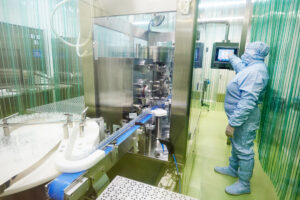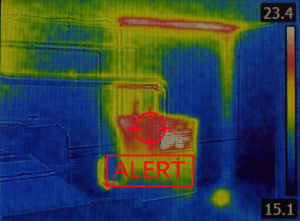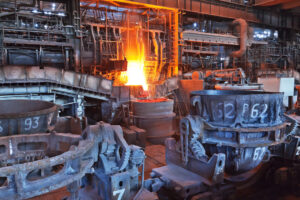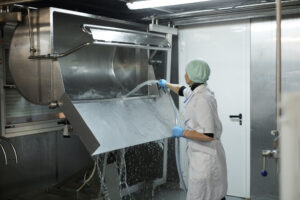When it comes to industrial environments, temperature isn’t just a comfort issue—it’s a survival factor. And not just for people.
Your equipment, especially video monitoring systems, must be built to endure the elements—whether it’s freezing cold, sweltering heat, or relentless humidity.
Video cameras used in industrial applications are expected to do a lot more than just capture footage. They must remain operational during temperature swings, function in moisture-laden environments, and withstand the mechanical and environmental stressors of these harsh settings.
That’s not something your average off-the-shelf camera from an unspecialized dealer can handle.
Let’s look at why choosing the right video cameras for temperature extremes matters—and where things often go wrong if you don’t.
Temperature Isn’t Just a Number — It’s a Hazard
In industrial settings, environmental temperatures can range from bone-chilling to blisteringly hot—sometimes within the same facility.
- Cold storage rooms in food processing plants can stay below freezing.
- Waste and recycling facilities often operate in steamy, humid atmospheres where moisture can wreak havoc on electronics.
- Mining operations may expose cameras to high temperatures near heavy machinery and cold temperatures deep underground.
- Foundries and metalworking facilities involve radiant heat that can push ambient temperatures far beyond typical ranges.
- Even manufacturing lines with washdown procedures add a layer of humidity that can degrade equipment over time.
Without the right hardware, this combination of temperature extremes, humidity, and mechanical stress can lead to camera fogging, failure, or degraded image quality—none of which are acceptable when you need reliable monitoring.
The Limits of Standard Cameras
A typical industrial-grade camera can operate in temperatures ranging from 14º to 122ºF (-10º to 50ºC). That covers a wide range of use cases—from general manufacturing to indoor material processing—but leaves out entire industries.
If your operations fall outside those temperature limits, the consequences of using the wrong camera aren’t just theoretical:
- Condensation inside the housing can lead to short circuits or blurry images.
- Excessive heat can cause sensors to malfunction or reduce their lifespan.
- Extreme cold can result in sluggish performance or total shutdown.
And in safety-critical environments, these aren’t just technical issues—they’re operational risks.
Matching Cameras to Conditions: What to Look For
When evaluating video monitoring systems for tough environments, here are some of the most critical factors to consider:
1. Temperature Rating
Make sure to check the operating temperature range for cameras you’re evaluating. For environments that routinely fall below 14ºF or rise above 122ºF, you need cameras engineered for those extremes.
For example, the CC02 Camera is designed specifically for punishing environments. It can operate in temperatures well beyond the standard range, making it ideal for use in hot sawmills, around heat-producing mining equipment, and in humid food processing facilities.
2. Humidity and Moisture Resistance
In humid environments like waste processing or seafood packing plants, even if temperatures aren’t extreme, moisture ingress is a constant threat. Look for:
- IP-rated enclosures (preferably IP67 or higher)
- Humidity-resistant components
- Corrosion resistant outer materials
While rugged enclosures help, internal components must also be protected to avoid degradation over time.
3. Housing Material and Design
Powder-coated aluminum housings are often essential for durability in environments that involve temperature highs and lows. If your cameras are installed in high- or low-temperature areas, don’t skimp on housing quality.
Also look for cameras with sun shields or insulated enclosures in hot environments—those small details can add years to a camera’s lifespan.
4. Mounting and Vibration Stability
Temperature changes often come with mechanical stress. Heavy machinery (like in mining or recycling facilities) can transmit vibrations that interfere with camera stability. Look for:
- Vibration mounts
- Ruggedized brackets
- Enclosures designed for both thermal expansion and physical impact
This ensures your camera stays put and keeps a clear image, regardless of external conditions.
Real-World Use Cases: Where Rugged Cameras Shine
Not sure if you need temperature-resilient cameras? Let’s look at a few examples where they’re a must:
- Food Processing Cold Rooms: Temperatures can plummet well below freezing. Cameras like the CC02, with its extreme cold tolerance, remain fully functional even during washdowns and freeze-thaw cycles.
- Waste Management Facilities: High humidity and airborne particulates mean the camera must be sealed, protected, and corrosion-resistant. A rugged enclosure and high IP rating are non-negotiable.
- Mining Sites: Near blasting or large machinery, not only is heat a problem, but so is mechanical shock. Cameras must tolerate heat radiating off equipment while handling vibration and dust.
- Steel Foundries or Kiln Areas: Surface temperatures can exceed 1000ºF, though ambient temperatures near the camera may hover around 140ºF. That’s outside the normal range for a camera and requires a specialty solution—like the Opticom Tech CC02 camera.
- Outdoor Perimeter Monitoring in Harsh Conditions: You need a camera that works through snow storms or sandstorms. Humidity, UV, and thermal extremes all need to be accounted for.
Other areas in your facility can use regular cameras, and we usually recommend a hybrid system that saves you money without compromising performance.
The Hidden Cost of Choosing the Wrong Camera
Too often, procurement decisions are made based on budget or spec sheets without consulting a technical expert. The result?
- Cameras fail months into deployment
- Expensive reinstallation costs
- Unmonitored blind spots when you need them most
- Production line downtime
- Increased maintenance or total replacement costs
Not to mention the reputational or operational risks of losing visual data during critical events.
Don’t Just Buy a Camera—Get the Right System
Choosing the right camera for extreme environments isn’t just about specs—it’s about understanding where and how the camera will be used. It requires more than a product list—it requires a conversation.
At Opticom Tech, we’ve worked with customers across food processing, forestry, mining, recycling, and manufacturing sectors to help facilities match the right camera to the right conditions. Whether you’re dealing with humid production lines or extreme outdoor temperature shifts, we have hardware solutions designed for durability and clarity in the most challenging environments.
Book a free consultation with an Opticom specialist to discuss your facility’s environment and make the right choice.







